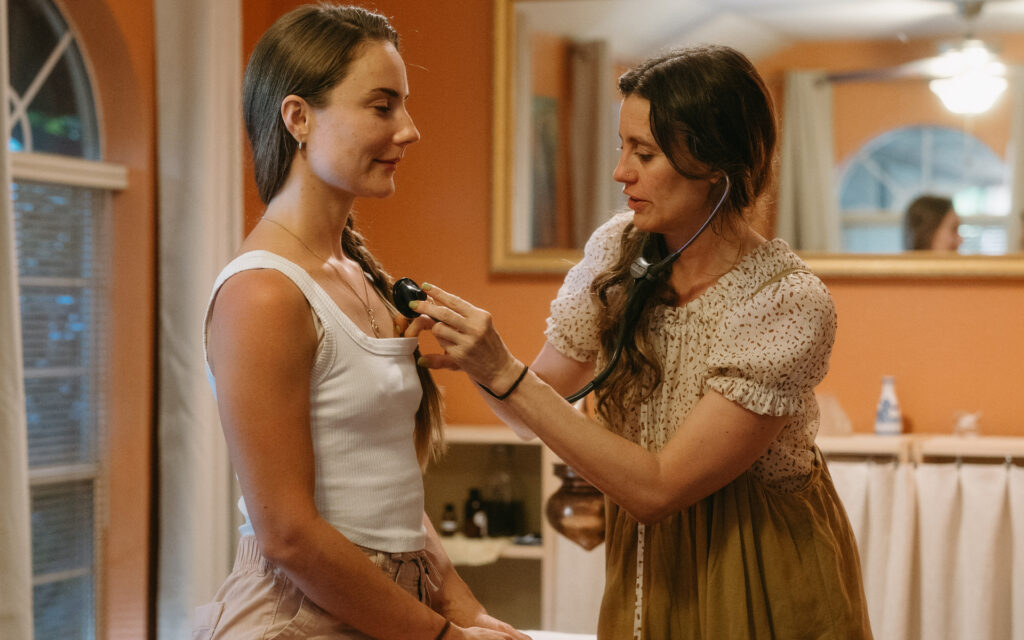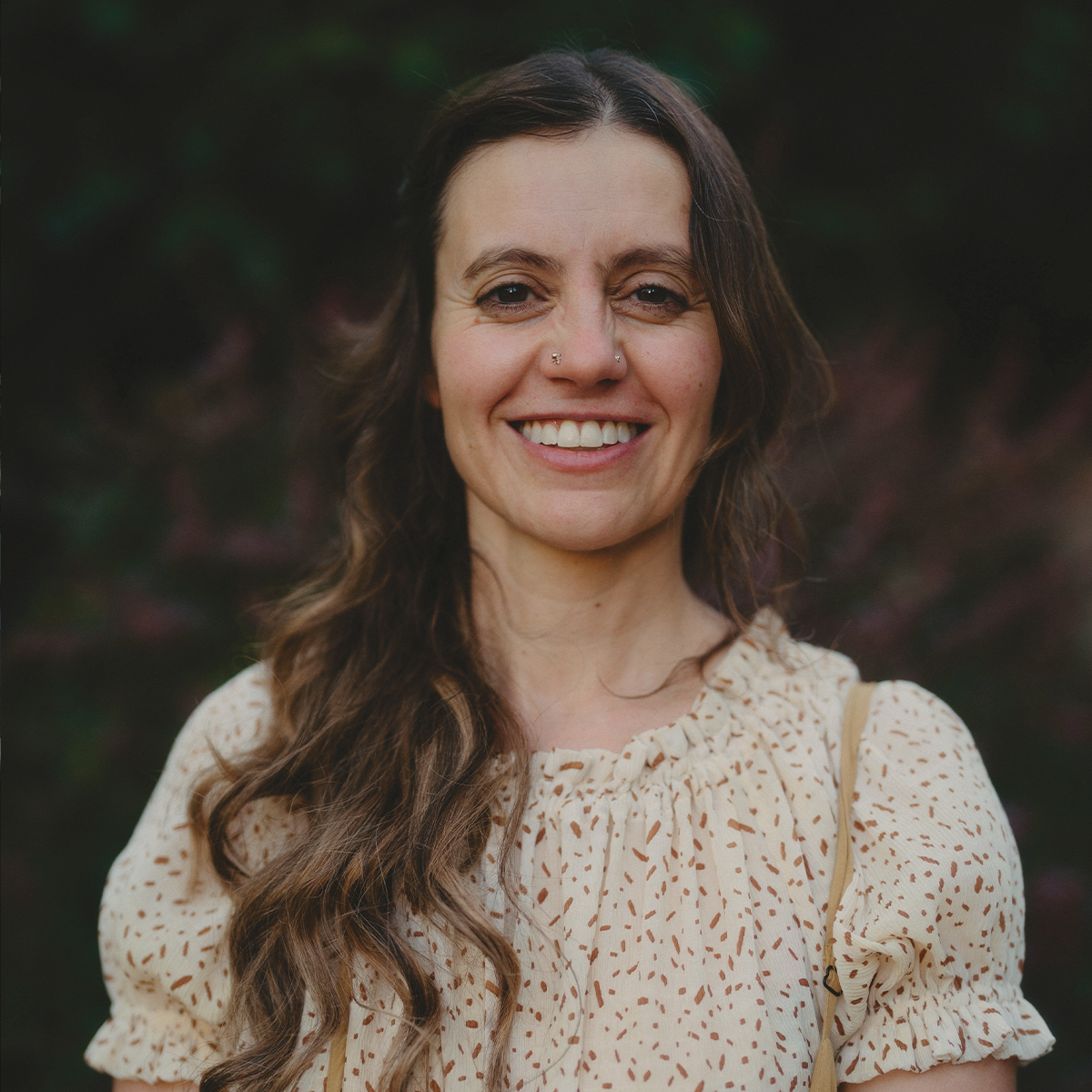A Nurse Practitioner’s Holistic Approach To Health
Photos by Jessie McCall
The Anja Chakra, or third eye, is our source of intuition. It’s the portal to a perspective beyond the physical realm responsible for insight and wisdom. It’s also the area of focus during an Āyurvedic Shirodhara, a healing technique meant to induce deep relaxation, relieve stress, aid in mental clarity, insomnia, anxiety, depression, and a host of psychological disorders.
During a typical session, warm oil flows continuously (for anywhere from 20 to 60 minutes) onto the center of the forehead, back over the crown of the head, and down past the temples, creating a meditative state described by some as “brain smoothing.” This, and other clarifying practices, are part of a twice-yearly cleanse called a Panchakarma, an Āyurvedic detoxification and rejuvenation therapy that involves a series of therapeutic treatments to cleanse the body of toxins, restore balance to the doshas, and promote overall health and wellbeing.
Jessica Lusignan, Āyurvedic Physician and Board Certified Family Nurse Practitioner, oversees patients for the Panchakarma, and an array of Āyurvedic treatments, at Fountain of Health Āyurveda, in Grass Valley. She is also one of the few holistic practitioners with a license to practice western medicine – the best of both worlds.

The term Āyurveda has become synonymous with the East, with herbs, and with doshas (the Āyurvedic system of acknowledging Earth’s elements within us). While Āyurveda is all of these things, and more, this 3,000 year old tradition remains well armed in the face of modern day health conditions. “My interest was always in treating diseases, and in treating patients post-stroke, post-heart attack, or who are battling diabetes, hypertension, or kidney failure,” Jessica begins, “Allopathic medicine has its strengths in urgent care, intensive care, and emergent care, which is typically the peak of these life-threatening events. I wanted something that would serve the whole patient, pre and post-trauma. Āyurveda, while a method of healing I deeply connect with, shines on the preventative and recovery sides of an acute healthcare event. Where traditional medicine ends, Āyurveda book-ends.”
In America, the integration of holistic and modern healthcare is still largely fringe, with patients preferring one or the other, but rarely are they resourced in tandem. Jessica’s credentials breakdown convention, arming her patients at Fountain of Health Āyurveda with a distillation of the best of the best – from the East and the West. “I’ve been a nurse for over 10 years; my mom, my grandmother, my aunt, they’re all RN’s and nurse practitioners. Western medicine is in my bloodline and I believe in its role in our lives, but there’s so much to be said for taking an integrative approach. I believe we should be giving our patients an array of modalities and then having informed conversations around those choices. For example, there’s so much Āyuveda can do for a stroke in terms of nourishing and restoring brain functioning, including bolstering the nervous system. In a hospital setting, at the point of discharge, the advice is typically to ‘enter a rehab center,’ but there needs to be a greater emphasis on preventing a second occurance. It’s the combination of traditional and Āyurvedic methodologies that makes integrative medicine such a powerhouse.”
Panchakarma
Panchakarma aims to eliminate toxins, restore balance among the doshas (Vata, Pitta, and Kapha), and promote a sense of clarity, both mentally and physically. Our bodies (the microcosm) naturally seek to reflect the greater tempo of a connected world (the macrocosm), making spring and fall traditional times of year to cleanse. “The change of seasons are typically when we’re most prone to having health issues” Jessica instructs. “In spring, everything starts to melt and become liquidated in our bodies and this is often when we get the sniffles. In the fall, it’s all about preparing for winter and bolstering the immune system to prevent colds and flu. The preceding season always informs my care.”
While nature remains the cornerstone of Āyurveda, from circadian rhythms, to seasonal cleanses, to the doshas and their corresponding elements (earth, water, fire, air, ether), our specific environment plays just as active a role, which Jessica considers (along with the unique Nevada County climate) during seasons of Panchakarma. “In our communities, we’ve seen so much flux. We have droughts and fires, but we also have winters that can be very cold and wet; it’s a climate of extremes. Because of this, people in Grass Valley and Nevada City are going to have a bit more dryness in their system, which means they’re likely to have higher Vata vitiation. Vata is the dosha that’s dry and moves rapidly, which means everything within the body is going to move quicker; the nervous system is more frenetic, the skin will dry out faster, people will age faster, and these individuals tend to be more constipated. It’s all based on the dosha, and each dosha has a primary location within the gastrointestinal tract where it belongs. For the Panchakarma, patients drink a medicated ghee (clarified butter) with particular herbs in it for several days. This drink goes deep into the tissues of the body to help extrapolate toxins. We call these toxins “Ama” in Āyurveda. There’s also a plant intelligence to the ghee, based on the herbs that are chosen, which helps to draw the Ama out of the body.”
Jessica is currently accepting new patients into her Āyurvedic practice, both in-person and remotely. While her two worlds of medicine are deeply connected, holistic healthcare is a calling she answers willingly, eager to serve her community, her patients, and her craft with all the insight and wisdom of a deeply nourished Anja Chakra, offering perspective, guidance, remedies, and palliative care at Fountain of Health Āyurveda.
www.fountainofhealth-medicalayurveda.com
www.facebook.com/groups/NURSINGandAYURVEDA
To Book: 530-464-8632
302 South Auburn Street
Grass Valley, CA 95945
